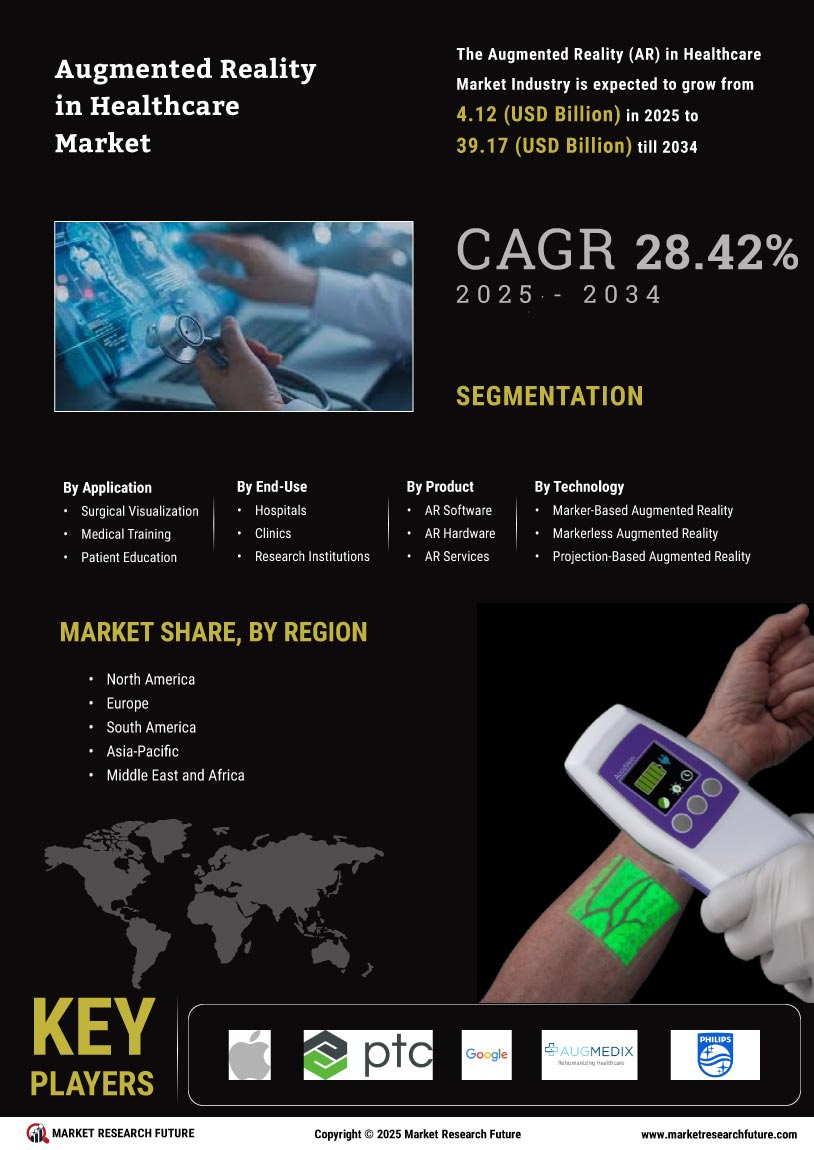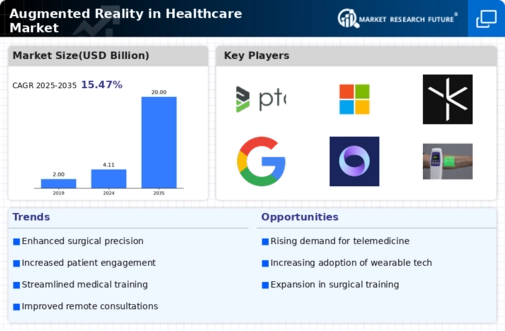Market Growth Projections
The Global Augmented Reality in Healthcare Market Industry is projected to experience substantial growth over the coming years. With an anticipated market value of 4.11 USD Billion in 2024, the industry is set to expand significantly, reaching an estimated 20 USD Billion by 2035. This growth trajectory reflects a compound annual growth rate (CAGR) of 15.47% from 2025 to 2035. Such projections underscore the increasing adoption of AR technologies across various healthcare sectors, including surgical assistance, medical training, and patient engagement. The market's evolution is indicative of a broader trend towards digital transformation in healthcare.
Technological Advancements
The Global Augmented Reality in Healthcare Market Industry is propelled by rapid technological advancements. Innovations in AR hardware and software, such as improved headsets and mobile applications, enhance the user experience for healthcare professionals. For instance, AR applications are being utilized in surgical procedures to overlay critical information directly onto the surgeon's field of view. This integration of technology not only improves precision but also reduces the likelihood of errors. As a result, the market is projected to reach 4.11 USD Billion in 2024, indicating a growing reliance on AR solutions in healthcare settings.
Enhanced Training and Education
The Global Augmented Reality in Healthcare Market Industry benefits significantly from enhanced training and education methodologies. AR provides immersive learning experiences for medical students and professionals, allowing them to practice procedures in a risk-free environment. For example, AR simulations can replicate complex surgeries, enabling trainees to visualize anatomy and practice techniques before actual procedures. This approach not only improves retention of knowledge but also boosts confidence among practitioners. As educational institutions increasingly adopt AR technologies, the market is likely to expand, contributing to a projected CAGR of 15.47% from 2025 to 2035.
Rising Focus on Patient Engagement
The Global Augmented Reality in Healthcare Market Industry is influenced by a rising focus on patient engagement. Healthcare providers are increasingly recognizing the importance of involving patients in their treatment processes. AR technologies facilitate interactive experiences that educate patients about their conditions and treatment options. For example, AR applications can visualize complex medical information, making it more accessible and understandable for patients. This engagement not only enhances patient satisfaction but also encourages adherence to treatment plans. As patient-centric care becomes a priority, the demand for AR solutions is likely to grow, further driving market expansion.
Growing Investment in Healthcare Technologies
The Global Augmented Reality in Healthcare Market Industry is bolstered by growing investments in healthcare technologies. Governments and private entities are increasingly allocating funds towards innovative healthcare solutions, including AR applications. This financial support fosters research and development, leading to the creation of advanced AR tools that enhance patient care and operational efficiency. For instance, initiatives aimed at integrating AR into rehabilitation programs demonstrate the potential for improved patient outcomes. As investment continues to rise, the market is expected to flourish, aligning with the broader trend of technological integration in healthcare.
Increased Demand for Remote Healthcare Solutions
The Global Augmented Reality in Healthcare Market Industry is witnessing a surge in demand for remote healthcare solutions. As healthcare systems evolve, the need for effective telemedicine and remote patient monitoring becomes increasingly apparent. AR technologies facilitate virtual consultations and remote training for healthcare professionals, allowing for real-time interaction and guidance. This trend is particularly relevant in rural or underserved areas where access to specialists is limited. The market's growth trajectory suggests a potential increase to 20 USD Billion by 2035, reflecting the ongoing shift towards digital health solutions.





















Leave a Comment